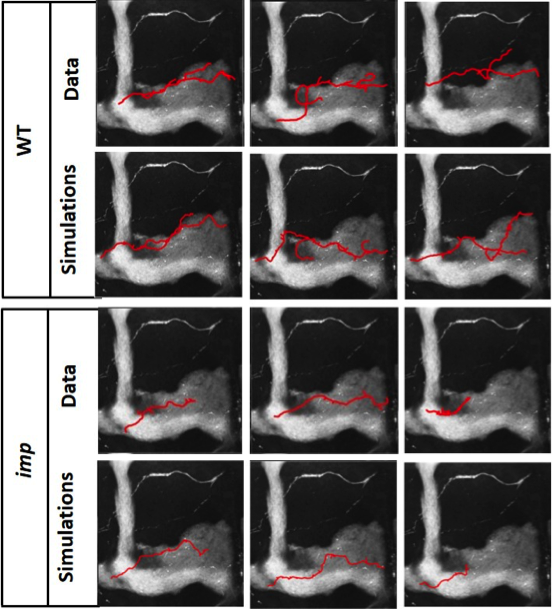Section: New Results
Modelling axon growth from in vivo data
Participants : Agustina Razetti, Xavier Descombes, Caroline Medioni, Florence Besse.
During the first part of this work, we focused at identifying the main morphological features that allow to describe and discriminate genetically different Drosophila Gamma neurons, as well as to automatically assess a quantification of the overall morphological distance between them [8]. The second part, developed this year, approaches the process of neuron growth and morphogenesis in pupal stage. Important advances have already been achieved in identifying the main factors involved in neuron development. The next step that has to be done is concerning how we approach the question.
In this work we intend to close the gap between classic in vitro experimental assumptions and real in vivo situations, where the final neuronal morphology is acquired through a dynamic and environmental-dependent process. In particular, the branch formation process - how or why branches are created - has been belittled or over-simplified by neuron development models. In our opinion, this represents a constraint in the general understanding of neuron development, hierarchy of the neuronal tree and adult functionality.
Our goal is to bring light to the mechanisms of branch formation during development in realistic conditions. We study the particular case of Drosophila Gamma neuron remodeling and analyze, for the first time to our knowledge, the mechanical situation of a whole population of Gamma neurons (650 individuals) growing together in a constraint space (i.e. medial lobe of the Mushroom Body). We hypothesize that one kind of branches are born when the growing tip encounters a mechanical obstacle (i.e. other neurons or the lobe limits), enhancing the probability that at least one neurite reaches the end of the lobe. We model the neurites growth by a Gaussian Markov chain, and the parameters of the model –which account for axon elasticity and guiding cues attractiveness- are estimated from data.
Our database is composed by different sets –wild type and mutations- of confocal images of a single neuron that we treated, segmented and normalized. We show that the proposed mechanistic branch generation process is plausible, and explore unsolved problems concerning the understanding of some particular Gamma neuron mutation phenotypes. This approach allows us also to analyze dynamic aspects of the Gamma neuron collective growth process such as speed and density in function of space and time, which help to explain several characteristics of the Gamma neuron morphology and behavior during development. Figure 12 shows examples of wild type as well as imp mutant neurons of our database and contrasts them with neurons from simulations that are morphologically close.


